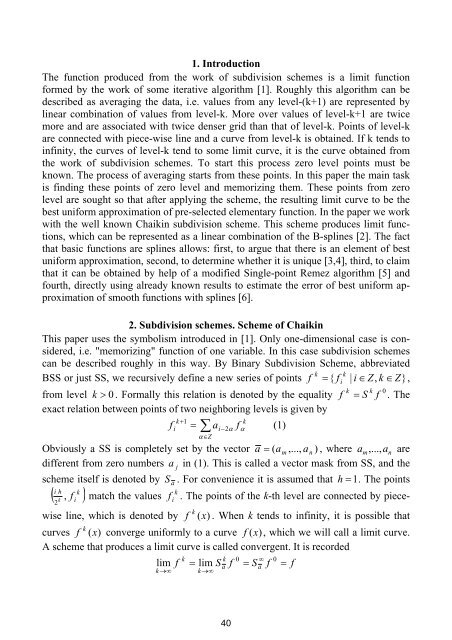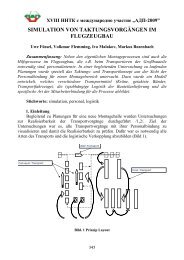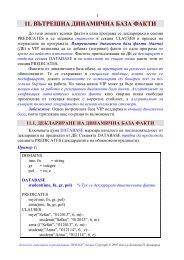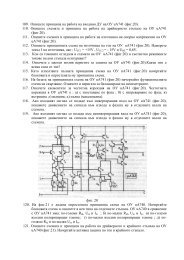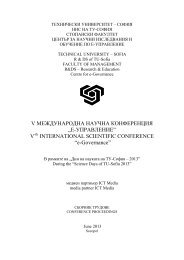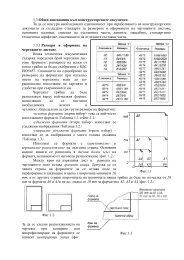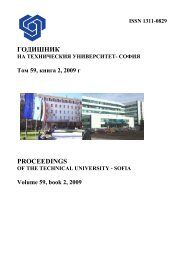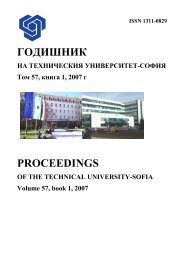Volume 61 Issue 2 (2011) - Годишник на ТУ - София - Технически ...
Volume 61 Issue 2 (2011) - Годишник на ТУ - София - Технически ...
Volume 61 Issue 2 (2011) - Годишник на ТУ - София - Технически ...
- No tags were found...
Create successful ePaper yourself
Turn your PDF publications into a flip-book with our unique Google optimized e-Paper software.
1. IntroductionThe function produced from the work of subdivision schemes is a limit functionformed by the work of some iterative algorithm [1]. Roughly this algorithm can bedescribed as averaging the data, i.e. values from any level-(k+1) are represented bylinear combination of values from level-k. More over values of level-k+1 are twicemore and are associated with twice denser grid than that of level-k. Points of level-kare connected with piece-wise line and a curve from level-k is obtained. If k tends toinfinity, the curves of level-k tend to some limit curve, it is the curve obtained fromthe work of subdivision schemes. To start this process zero level points must beknown. The process of averaging starts from these points. In this paper the main taskis finding these points of zero level and memorizing them. These points from zerolevel are sought so that after applying the scheme, the resulting limit curve to be thebest uniform approximation of pre-selected elementary function. In the paper we workwith the well known Chaikin subdivision scheme. This scheme produces limit functions,which can be represented as a linear combination of the B-splines [2]. The factthat basic functions are splines allows: first, to argue that there is an element of bestuniform approximation, second, to determine whether it is unique [3,4], third, to claimthat it can be obtained by help of a modified Single-point Remez algorithm [5] andfourth, directly using already known results to estimate the error of best uniform approximationof smooth functions with splines [6].2. Subdivision schemes. Scheme of ChaikinThis paper uses the symbolism introduced in [1]. Only one-dimensional case is considered,i.e. "memorizing" function of one variable. In this case subdivision schemescan be described roughly in this way. By Binary Subdivision Scheme, abbreviatedk kBSS or just SS, we recursively define a new series of points f { f i | i Z,k Z},0from level k 0 . Formally this relation is denoted by the equality fk k S f . Theexact relation between points of two neighboring levels is given byk 1kf a f (1)iZi22 k ,ikf iObviously a SS is completely set by the vector a ( a m ,..., an) , where a m,..., anaredifferent from zero numbers a j in (1). This is called a vector mask from SS, and thescheme itself is denoted by S a . For convenience it is assumed that h 1. The pointsi h kf match the values . The points of the k-th level are connected by piecewiseline, which is denoted by f k (x). When k tends to infinity, it is possible thatcurves f k (x)converge uniformly to a curve f (x), which we will call a limit curve.A scheme that produces a limit curve is called convergent. It is recordedkk 0 0lim f lim S f S f fkkaa40


